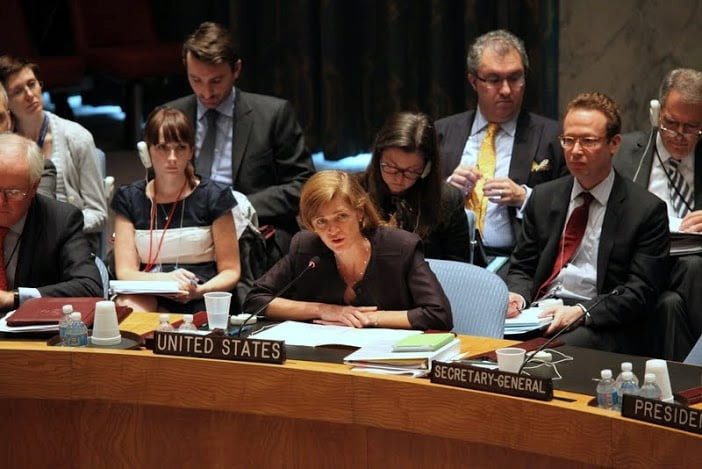Ed note. This post was originally published in February 2015, when the WHO declared that the ebola outbreak in West Africa had largely been contained. Today, January 13, 2016, the World Health Organization declared the official end of the outbreak, saying”all known chains of transmission have been stopped in West Africa.” The WHO warns that some residual cases may flare up because the disease can exist in the semen of some men who otherwise recovered from the disease. But the outbreak that began in Spring 2014 and killed over 11,000 people is now over.
How did a highly infectious disease that was afflicting 3,000 people per month morph from an outbreak that was totally out of control, to somewhat under control, to completely manageable, and finally, today, over? Short answer is American global leadership–and there’s evidence to support it.
—
Last week, the World Health Organization announced that its response to the ebola outbreak in West Africa had entered a new phase. They were no longer focused solely on ending transmission of the disease, but totally eliminate it. There were fewer than 500 cases reported in the last 21 days–and under than 100 new cases reported in Sierra Leone, Liberia and Guinea in the past week.
The end of this outbreak is now tantalizingly in reach.
This is an amazing accomplishment when you consider how fast and furious the virus was spreading just a few months ago. In September, the rate of new infections were doubling every three weeks. There were nearly 3,000 new infections each month.
The outbreak was out of control. And now it’s under control. So what tipped the scales?
I’ve long had a theory that an unprecedented decision by the United States to bring the ebola outbreak to the Security Council was the key inflection point after which the pieces of a robust international response commensurate with the scale of the crisis began to fall into place. There’s anecdotal data to back up this claim, including a loosening of travel restrictions to and from the affected countries (as called for by the Security Council resolution) and the creation and development of a new UN Emergency Ebola Response Mission to better coordinate on-the-ground-response are among the anecdotal data.
New research by Dr. Karen Grepin of NYU offers data that might support my theory. In a piece posted today in the British Medical Journal, Grepin (who you need to follow on Twitter) takes a deep dive into the level and speed of international donations to ebola response. She finds that even as the WHO kept revising upwards the estimated financial requirements needed to fund a response since March 2014, major funding did not reach the affected regions until October.
Substantial donor support did not reach affected countries until October, more than six months after WHO was alerted to the outbreak. These delays in disbursements of funding may have contributed to spread of the virus and could have increased the financial needs. The problem has not been the generosity of donors but that the resources have not been deployed rapidly enough.
Grepin concludes that the sluggish pace at which international donors responded to the crisis early on probably made the response more expensive in the long term. She also suggests that the international community consider creating a financing facility to quickly disburse funds during an infectious disease outbreak (which is something the WHO is poised to establish).
This chart offers a good visual demonstration of when the pledges started to materialize.

As you can see from her chart above, the spike in pledges in mid-September coincides with an increase in paid contributions weeks later in October.
What happened in mid September to cause that spike?
On September 16, President Obama visited the United States Centers for Disease Control and Prevention in Atlanta to meet with staff working on the ebola response. In a speech, he announced that the USA was significantly stepping up its contributions to the ebola response in West Africa, including dispatching 3,000 troops and medics to the region to build and staff medical centers and establish an air bridge to get personnel and supplies to the affected countries. Two days later, the USA called an emergency meeting of the Security Council on the ebola crisis. An unprecedented number of countries — over 130 — co-sponsored a resolution calling for a stepped up international response to the crisis, and outlining measures the international community needed to take to contain this crisis.
This Security Council meeting effectively internationalized the American decision to make ebola response a top tier international security priority. And as you can see from Dr. Grepin’s research, starting in mid September, donor pledges for ebola response started to roll in. By October started to materialize in the ground.
This makes a strong case that this one week in September marked the beginning of the end of the ebola outbreak. American leadership, including a decision to secure broad international support for a common ebola response plan at the United Nations, turned the tide against the outbreak.
